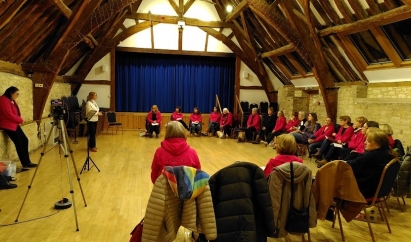I’ve had several conversations recently with people involved in writing comedic parodies and/or needing to update references in existing comedy songs. And in the process a few themes have emerged that I thought it worth pulling together a bit so I’ve got something useful to link to if I find myself having more such conversations.
Have enough jokes
Like the concept of Retroactive Inevitability, this is something that Roger Payne used to talk about. It’s very easy to get a brilliant idea for a parody, but end up with essentially just the one joke. For sure, having one major concept you build around is a good strategy for a coherent whole, but you also need regular laugh-points along the way.
On the stand-up comedy course I did way back when, the guide-line we were given was to make sure you never went more than 30 seconds without a punchline. Given that songs tend to be a more compact and less wordy form than stand-up, I wouldn’t be surprised if you need them more often than that in music. I tend to measure musical time in bars rather than seconds, and my feeling is at least every 16 bars, but with some at 8-bar intervals., is what you’re aiming for.

